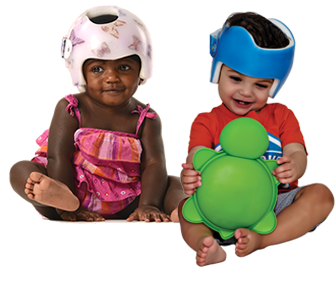In 1994, the National Institute of Child Health and Human Development (NICHD) launched the “Back to Sleep” campaign which was aimed at reducing the risk of Sudden Infant Death Syndrome (SIDS). Because SIDS is the number one cause of death in infants younger than one year, experts agreed it was safer to put infants to sleep on their backs. While the incidence of SIDS has decreased by 50%, there has been a 9 fold increase in cases of positional plagiocephaly from 1999 – 2007.
Positional brachycephaly is due to the baby spending most of their time on their backs in the same position. Due to the soft moldable nature of an infant’s skull, resting the head on a flat surface for extended periods without sufficient Tummy Time can lead to flattening. As an infant with a flat spot is continuously put in the same position, the flat spot increases. In some cases, this may lead to a facial asymmetry such as frontal bossing.
In addition to being put to sleep on the back, many infants spend time in the same position because of changes in technology and the invention of mobile baby car seat carriers. With a simple click, the baby is taken from stroller to car and vice-a-versa. Often, infants remain in the carriers placed on a table simply because it is convenient, and the baby is comfortable. The result is that the back of the baby’s head receives constant pressure and the baby is not using their neck muscles.
Some infants are actually more prone to plagiocephaly. Preemies or premature babies have softer skulls than full-term babies. Moreover, they often have medical complications and thus, are not picked up as often which leads to more time on the back.
Another group which shows a higher incidence of brachycephaly are infants from multiple births. It has been suggested that brachycephaly is more common with this group, as they present with more of the risk factors associated with brachycephaly. These include: low birth weight, intrauterine constraint, intrauterine position, premature birth and congenital muscular torticollis.
Fortunately, brachycephaly is quite easy to treat with helmet therapy, also known as Cranial Remolding Helmet treatment.



